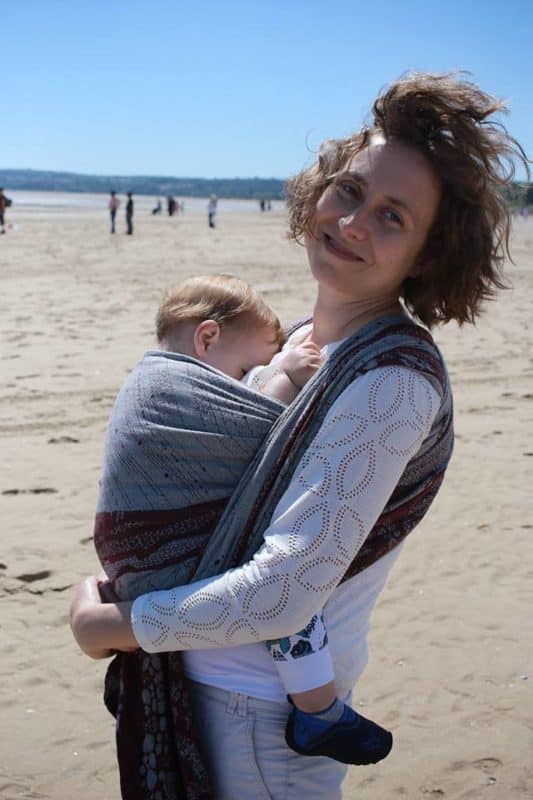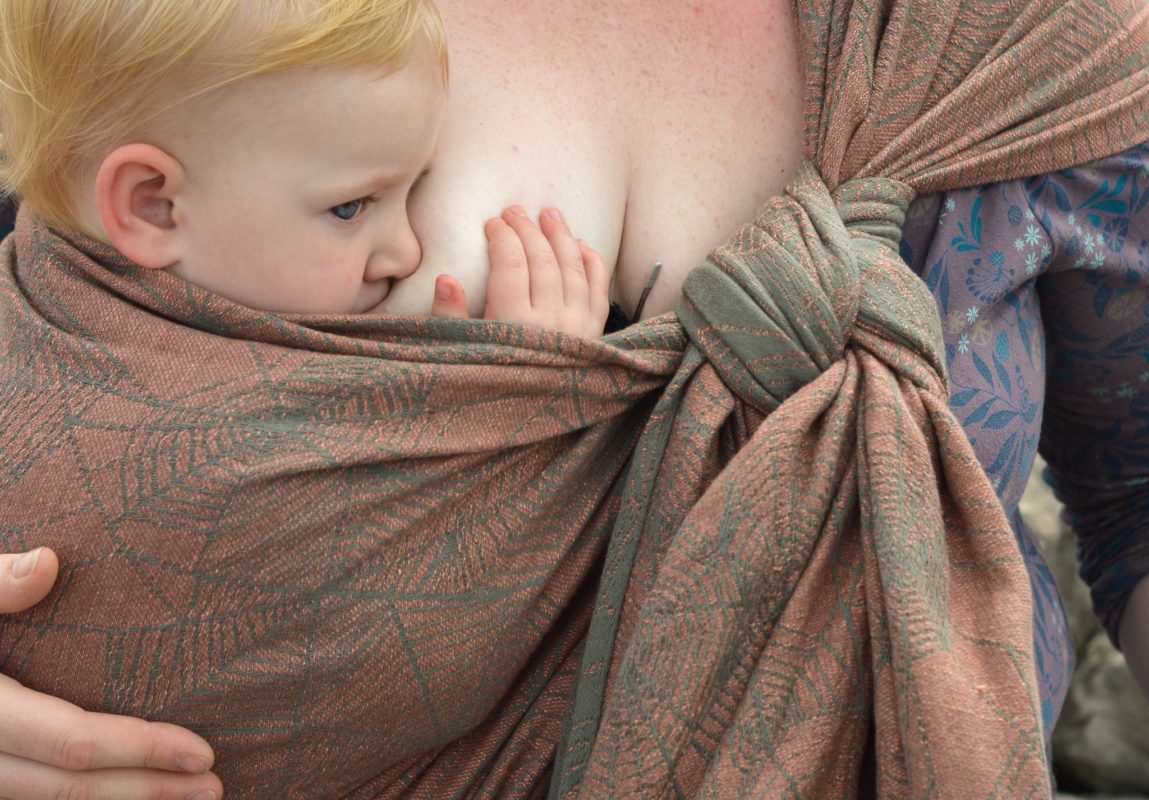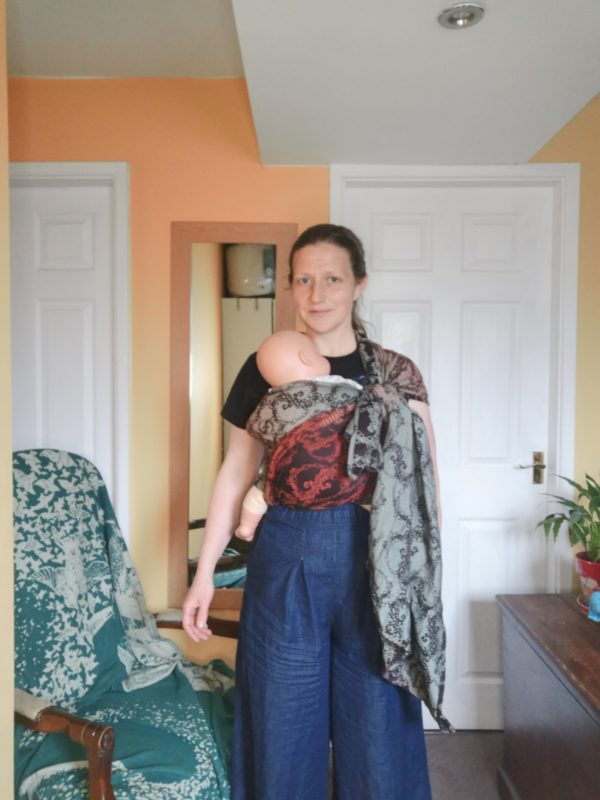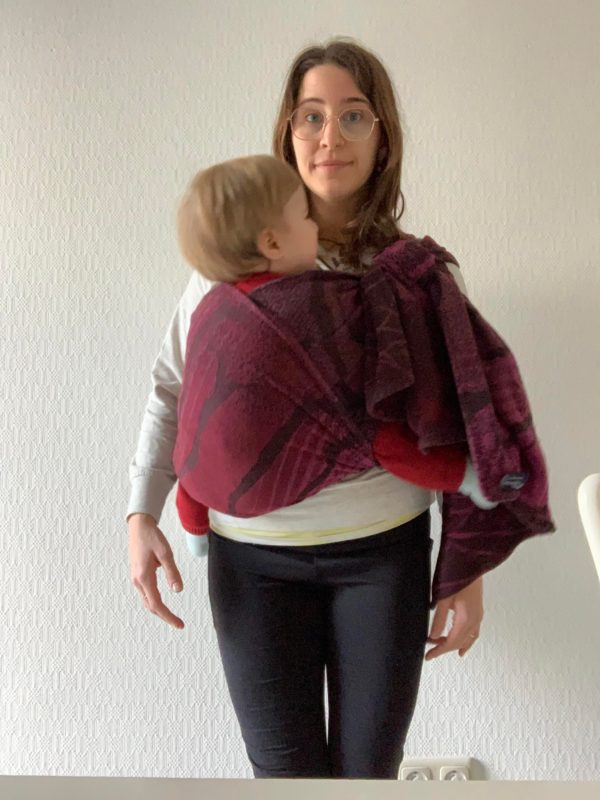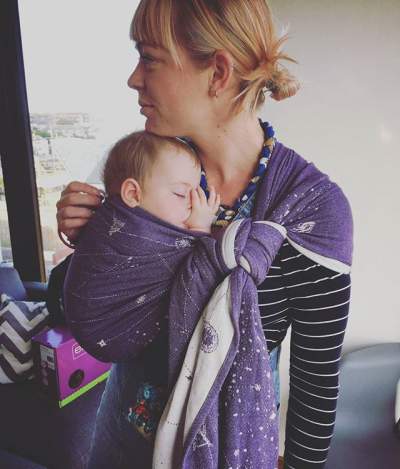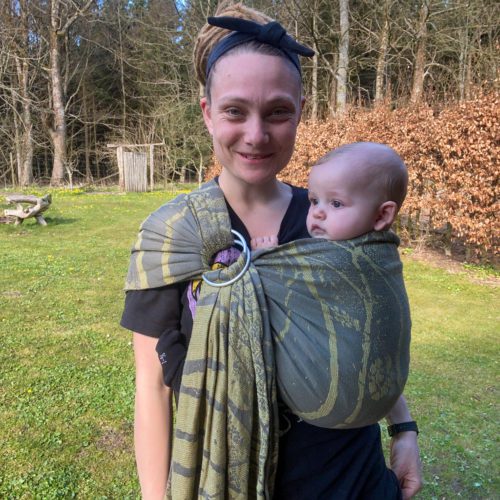Behind the scenes at Firespiral, Using Woven Wraps
How Woven Wraps can help with Breastfeeding and Chestfeeding
If you are planning to breastfeed or chestfeed your baby then babywearing with a woven wrap can be a great tool for supporting your success.
In this post we explain how babywearing can help you with breastfeeding/ chestfeeding, we share our own experiences and give you our expert advice on how to feed in a woven wrap sling.
How can babywearing help you breast/chest feed?
Babywearing can help your nursing journey in lots of ways, even if you never actually feed in the sling!
- provides opportunity for skin to skin contact which can help increase your milk production
- keeps your baby close- breastfed babies need to feed frequently and having them in the sling means they’re already in the right place!
- Having your baby close by can help you to observe and learn their feeding cues. Responding to their subtle early feeding cues can make the whole thing far easier than waiting until they’re very hungry and getting more agitated.
- Breast and chestfeeding is easier if you’re feeling relaxed and confident. Babywearing can be a great way to build your parenting confidence and lower your stress levels. It is a useful tool for settling a fussy baby pre-feed, for aiding gentle digestion or keeping reflux prone babies upright after a feed.
You can learn how to feed your baby in your carrier, allowing you to nurse whilst out and about in an almost hands free way.

Jen’s experience
I’ve breastfed 3 babies, and each one has been a completely different experience. My first boy was born via an unexpected emergency caesarean that had a huge effect on my early nursing journey. It took a while for my milk to come in and I found it hard to sit or lie comfortably to nurse. The first few weeks were a huge learning curve but with good support I finally got the hang of it. As he was my first baby I had plenty of time to sit and feed him but he was really fussy, refluxy and struggled to settle. I would feed him upright in the sling as I walked round the streets! My middle child was a breeze to feed in comparison and the only tricky thing was how to handle his toddler brother at the same time. I had to do a lot more feeding on the go, on the way to playgroup, out at the park etc. I didn’t have the option to stop and sit to feed him so being able to feed in the sling was a massive help. My 3rd baby was the hardest to feed by far, despite having a good few years of breastfeeding experience under my belt at that point. She had a severe tongue tie that would have floored me if she’d been my first baby. It took a long time to master the knack of feeding her. I did eventually start feeding her in the wrap (she’d always want to feed on the walk to school when we didn’t have time to stop and sit somewhere) but it wasn’t as quick and easy as with her brother before her. The boys each naturally stopped feeding during my next pregnancies (at 20 months and 3 years), but that wasn’t a possibility with the youngest! She had just turned 4 before she’d completely stopped. Whilst that could seem quite a long time given our current cultural norms for breastfeeding, it was very similar timescale to children giving up their dummy/pacifier.
Tamsin’s experience
I always liked the idea of breastfeeding in a baby wrap, but in the newborn days I found it easier to sit down and make sure that I got my position and latch as good as possible using a cushion, (and have a much needed rest!).I remember the first occasion with my youngest that I found breastfeeding in a wrap to be necessary – he must have been about 8 weeks old and we had gone out for a family walk. We were on a steep, narrow path, and all of a sudden he was desperate for a feed but there was nowhere to stop and sit. I was wearing him in a front cross carry with a base sized wrap so I adjusted the carry and fed him as we walked. I had to support him with my arm, walk very slowly and it wasn’t the comfiest thing but he was happily nursing and crisis averted!
I nursed all 3 of my children in various baby carriers and wraps when they were out of the newborn stage and were more able to help the process by supporting themselves and moving into a good position! I found that nursing in a carrier was made easier with the right clothing choice for over the top access.
HOW ARE WOVEN WRAPS IDEAL FOR FEEDING IN?
- Woven wraps are incredibly flexible baby carriers. They don’t have fixed waistbands or straps, allowing you to adjust and reposition them however you need to.
- This also means that the cloth doesn’t have to dig in or put undue pressure on breast/chest tissue which can help if you have duct issues.
- You can tie a woven wrap in a ‘poppable’ way that allows you to lift your baby in and out of the carry until you feel ready to nurse in the sling. The wide cloth passes can be used for modesty if you feel exposed as you feed.
Learning to feed in a woven wrap
Important stuff to think about before you start:
- You need to feel comfortable and confident breastfeeding before you try to feed in your wrap.
- You might be ready to do this right from the early newborn days, or it could be a few months before it has clicked enough to have a bash at nursing in the wrap. It is a completely personal thing, don’t rush it!
- Once you have got the knack of latching and feeding your baby you can start to combine nursing and wrapping. Hungry babies can be fussy and squirmy, so maybe have a practice when yours isn’t desperate for a feed.
- The carrier is a feeding support only, don’t expect to be 100% hands free, especially for little babies who can’t hold their own weight. It will get easier as your baby becomes more independently mobile.
So here’s how to do it!
STEP BY STEP PHOTO INSTRUCTIONS
(Scroll right and read the captions underneath)
VIDEO GUIDE TO FEEDING IN A WRAP
Here’s a video of breastfeeding a toddler. The process of adjusting the sling is essentially the same as with a smaller baby,but a toddler will be able to better protect their own airway and also help with positioning themselves for a good feed.
Here’s a link to a fabulous article written for us by certified lactation consultant, Carmen Pagor.
This is our guide to adapting the front wrap cross carry for easy feeding.
Here are some good carries to try feeding in.
You can also try feeding in a ringsling. You can seen our selection of wraps and ringslings below.
Here are some useful resources to support you in your feeding journey
https://www.nhs.uk/conditions/baby/breastfeeding-and-bottle-feeding/breastfeeding/help-and-support/
Birth and parenting support services for LGBTQ+ people in the UK https://www.parentingqueer.co.uk/
https://ibconline.ca/information-sheets/
Coorie in with love run private feeding in slings workshops (online or in person) for 1:1 tailored support with all forms of feeding in a woven wrap
